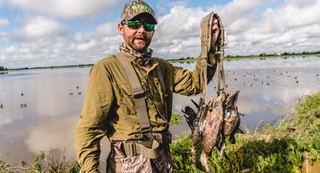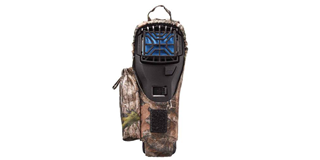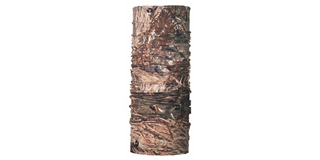A 28-Gauge Epiphany
This trending sub-gauge leaves a lasting first impression on the author and several flocks of South Texas bluewings
This trending sub-gauge leaves a lasting first impression on the author and several flocks of South Texas bluewings

By Chris Jennings
Veteran South Texas waterfowl guide Jimmy Reynolds rolled his Polaris Ranger to a halt along a rice levee just outside El Campo before dawn. It was 80 degrees, the air was thick, and the drone of mosquitoes began as soon as the side-by-side engine went silent. Reynolds stepped into the high grass surrounding a pit blind, popped the top off a can of insect fogger, and dropped it in. That should knock them down a bit, he said as his headlamp lit up the plume billowing from the blind.
South Texas in September is rife with mosquitoes, intense humidity, and blue-winged teal. As far as duck hunting goes, its worth dealing with the first two to experience the latter. Reynolds tossed out decoys and we unloaded guns and gear as the fogger fought the good fight in the blind.
This trip was hosted by Kent Cartridge Company and Mossberg, but the catch was that we were shooting Mossberg SA-28s and Kents new 28-gauge 2 bismuth 6s. Never having shot a 28-gauge at anything, let alone waterfowl, my confidence was teetering. I shoot a 20 regularly, so it wasnt the knockdown capabilities that had me questioning; it was more of a psychological hesitation because I had never done it before.
There are many reasons hunters move to the 28-gauge, explains Linda Powell, director of media relations for Mossberg. Personally, I like the 28-gauge because I want less recoil and theyre readily available in the Bantam, which offers shorter length-of-pull for smaller frames.
At first shooting light, a flock of 20 teal dove low into the early-morning shadows created by the levee, then climbed 75 feet into the air before swooping down toward the water and our decoys, offering a textbook blue-winged teal decoying shot.
There was a subtlety to the pop, pop pop, pop pop, pop, pop of the 28s report as multiple shooters took advantage of the close-decoying bluewings. Several birds splashed into the water and a smattering of feathers hung in the dense air. The guns lack of recoil was noticeable, and the tiny autoloader proved lethal on the first flock. The birds were hit hard, and the dog made short work of the lifeless teal on the water. With the next flock already buzzing the far edges of the pond, I shouldered the 6 1/2-pound autoloader again, swung the 26-inch barrel left and right as a test, then thumbed two more rounds into magazine. It took only one flock to convince me that the 28-gauge is a legitimate option in the duck blind.
A typical misconception is that shooting a 28 is like shooting a .410. The 28-gauges bore diameter of .550 inches is closer to that of a 20-gauge (.615 inches) than it is to the .410, which is named after its bore diameter. The 28 has always had a spot in upland hunting but has yet to become commonplace in duck blinds.
The 20- and 28-gauges are going to be taking over, says Rob Roberts, owner of Rob Roberts Custom Gunworks in Batesville, Arkansas. Roberts is one of the industry leaders in custom shotgun modifications and has more than likely forgotten more ballistic information than most of us will ever know. The dynamics of a 28-gauge are ballistically perfect due to the combination of the diameter of the casing and the length. Its like the 6.5 Creedmoor for rifle shooters, he explains.
Andrew Howard, who was representing Kent Cartridge Company on the Texas teal hunt, passed out boxes of the companys new 2 3/4 bismuth 6s before we left the lodge. In between flocks, I reached into my shirt pocket to grab a few more shells and the diameter of the casings prompted a noticeable difference. They slid through my fingers when I rushed the reloading process and, contrary to Roberts assessment, it felt a lot more like a .410. As with any activity, once it becomes routine, even a minute change can throw you off-kilter. This is even truer in the frantic rush of a pit-blind reload. However, after the third volley, I stopped noticing the difference and easily adjusted to the gun and the ammunition.
Before this Texas trip, I had never hunted with a 28-gauge, Howard says. The year before, I did a teal hunt and we used 16-gauge Kent bismuth loads. It was so effective that I knew the 28s would have to be tested. South Texas teal hunting typically gives you lots of close, fast-paced shooting. The size of the birds and the need for a nimble-handling gun make this a premium nontoxic load test.

The 28-gauge proved deadly and opened up a whole new realm of possibilities for waterfowling with sub-gauges.
Photo Howard Communications
As sub-gauges continue to become more popular with duck and goose hunters, it isnt the gun companies leading the chargetheyve always offered sub-gauge options. Its the ammunition companies that are out front, producing a wide variety of dense nontoxic shot that is improving lethality for larger gamebird species.
Roberts has been customizing 20-gauges for waterfowl hunters as fast as he can get them, but 28-gauges are beginning to trickle into his shop as well. He expects that trend to continue.
The 28-gauge will outperform the 20-gauge when the ammunition comes around, and it looks like it is, Roberts explains. I recommend shooting good [high-end nontoxic] ammunition with the sub-gauges. We are seeing some unbelievable results when patterning. I like to tell people, You dont take a top-speed dragster down to the track and put ethanol in it.
We slid into a more traditional Texas-style blindhog wire brushed with what looked like Prairie Acacia and other local shrubbery. The blind was propped up by T-posts on the edge of a rice field, where a ratoon crop was pushing up through the water. This was signature bluewing migration and wintering habitat, and the birds arrived as if on cue.
Large flocks of 15 or more teal came from the south, whipped around the rice field, and screamed over the decoys. What little wind we had was blowing lightly over our right shoulders, offering a steady stream of left-to-right decoying shots. Our party, shooting two 28s as well as one 20, wrapped up our respective limits before the Texas sun rose high enough in the sky to make it uncomfortably hot.

Steady, Texas-based retrievers made quick work of downed bluewings in shallow rice field habitats.
Photo Howard Communications
I was really surprised at the knockdown power of the loads, Howard says. The smaller guns were easier to handle, and the low recoil made for faster follow-up shots. Being that it is a 28, I would be a little more mindful of shots beyond 30 yards, but ducks in the decoys will be no problem.
Seeing is believing, as they say, and having no prior experience with the 28-gauge, this trip helped me gain a better understanding of its effectiveness. Having said that, there is a right time and place for the 28. Fortunately for us, a September teal hunt in Texas fit the bill perfectly.

The author holds up a limit of Texas bluewings, all taken with a 28-gauge.
Photo Howard Communications
Teal season in Texas can make for some tough conditions, thanks to hot, humid temperatures and mosquitoes that are big enough to knock you down and steal your wallet. Following is a list of gear I traveled with to make for a more enjoyable trip to the Lone Star State.







Ducks Unlimited uses cookies to enhance your browsing experience, optimize site functionality, analyze traffic, and deliver personalized advertising through third parties. By continuing to use this site, you agree to our use of cookies. View Privacy Policy